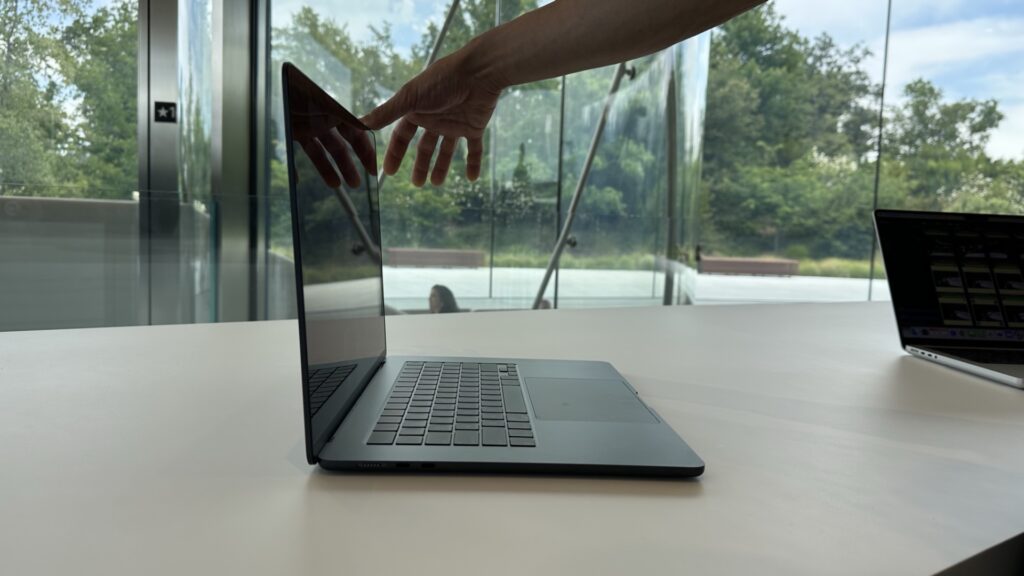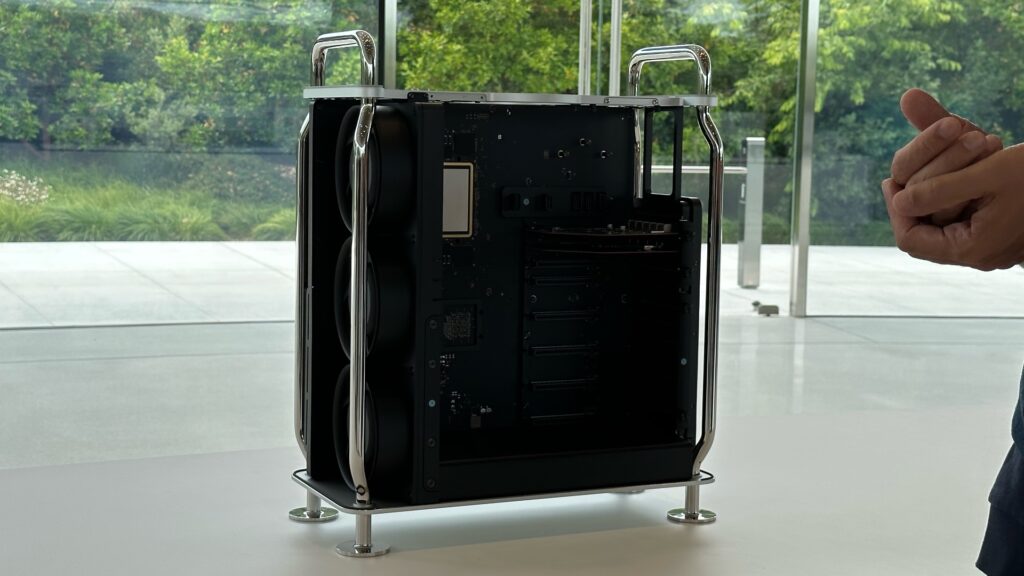At Apple Park, Numerama had the opportunity to play with the 15.3-inch MacBook Air, Mac Studio M2 and Apple Silicon Mac Pro in preview. Apple’s new “large” laptop stands out and could well be one of the big winners of the new school year.
Historically, Apple has always reserved large screens for its professional computers. MacBooks and MacBook Airs have come in different sizes, from 11.6 to 13.6 inches with the latest MacBook Air, but the larger diagonals, which hit 17 inches before dropping back down to 16.2 inches, have always been exclusive to MacBook Pros. Having a big screen at Apple has always been a luxury, until June 5, 2023.
At Apple Park, Numerama had the opportunity to preview the MacBook Air with a 15.3-inch screen, just announced by the brand at its WWDC. Compared to a 16″ MacBook Pro at 2,999 euros, this new MacBook Air 15″ at 1,599 euros could make noise in the laptop market.
A format that is obvious
Launched just over a year ago, the 13.6-inch MacBook Air with an M2 chip is, according to Apple, the best-selling laptop in the world. Tomorrow it could be eclipsed by its big 15.3-inch “little brother”.
In the PC market, large screens are popular. Why wait 15 years to make the MacBook Air bigger, when the marketing potential of a large laptop is immense? That’s a good question, one we’ll probably never get an answer to. Still, this 15.3-inch MacBook Air is not really surprising on the first try, since its existence is obvious.
A year after testing the 13.6-inch MacBook Air, it’s hard to be out of place with the new 15.3-inch MacBook Air. The few elements that diverge are the weight (1.51 against 1.24 kg, which makes it less easy to catch with two fingers), the thinness (2.37 cm closed against 2.15 cm, which is not disturbing) and the layout of the keyboard, now framed by two side strips. The 15″ MacBook Air looks like a 13″ MacBook Air, but bigger.

Of course, the screen is another differentiator. Going from 13.6 to 15.3 inches allows for more display pixels (2,880 x 1,864, versus 2,560 x 1,664), which should be a big hit with people who like to downsize their windows to display more applications simultaneously (the notch is also proportionally less visible, which is good news). On the battery side, Apple promises the same as on the 13.6-inch model despite the larger screen. In view of the incredible autonomy of the small model, we can only rejoice. (We rarely end the day below 30%, using it from 9 a.m. to 7 p.m.).
The only complaints we want to make about this new MacBook Air after our first grip: why not take advantage of its larger size to add a USB-C port on the right side (there are two left) and why not offer Wi-Fi 6E, like on the MacBook Pro? The most likely assumption is that the 15″ MacBook Air uses the same components as the 13″ MacBook Air, apart from the battery. We can only hope that an M3 model does not arrive too quickly, which could discount the machine.

Mac Pro and Mac Studio: Apple marks the end of the Intel era
As you can see, we don’t worry much about the 15″ MacBook Air. If its difference of 300 euros with the “small” model could continue to encourage users to turn to 13.6 inches, we have no doubt about its success. At a time when the price of the Pro line was exploding, it was time to have a big MacBook for everyone. Apple Silicon chips arguably make the transition easier, offering power on all models, including the less expensive ones.

Speaking of Apple Silicon, how can we end this article without mentioning the new Mac Studio and Mac Pro, with M2 Max (Studio only) and M2 Ultra (Studio and Pro) chips?
In addition to showing the Apple Vision Pro headset for the first time, June 5, 2023 is a historic date for Apple, since it marks the end of the last computer equipped with an Intel chip. If the sales volume of the Mac Pro should be hundreds of times lower than that of the MacBook Air 15″, its arrival marks the end of a transition initiated almost 3 years ago for Apple. It remains to be seen how the professional world will welcome this machine, while old, unsuitable software is sometimes sovereign.
Do you want to know everything about the mobility of tomorrow, from electric cars to pedelecs? Subscribe now to our Watt Else newsletter!
